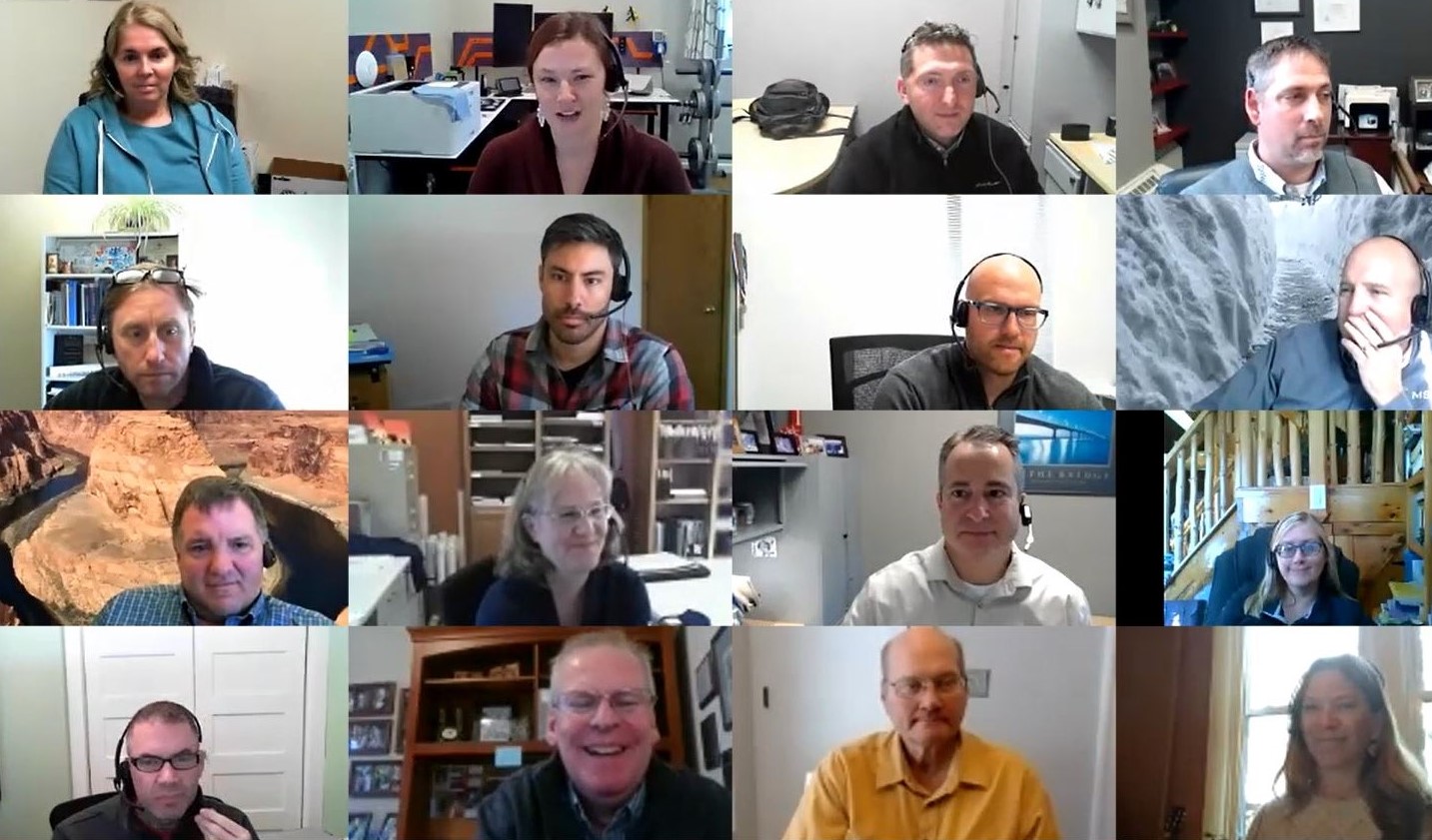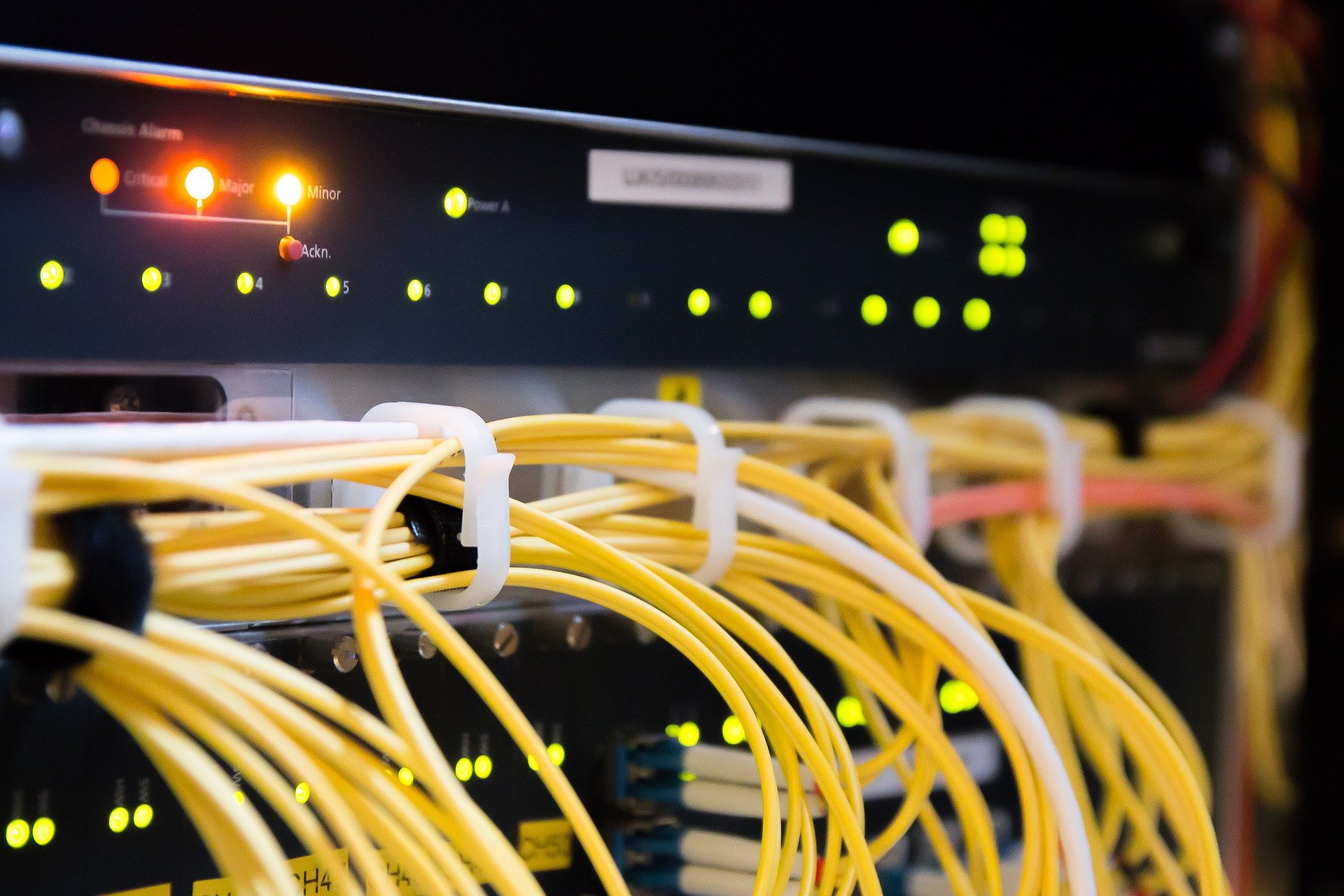Remember when a noise that sounded like a dissonant blend of television static, emergency alarms and guitar feedback was the sound of progress?
Indeed, dial-up internet access and the crackling virtual handshake between modems once elicited great excitement and a sense of unbound possibility. Today, we turn a different digital chapter—one necessitated, in part, by changes from a world impacted by the COVID-19 pandemic. But, also one where going virtual opens new and creative doors for community gathering and conducting business. It does not come without challenges, nor without a price tag. This leaves many communities — especially those more rural in nature — struggling to keep up.
Fortunately, small investments can equate to large virtual strides forward, and there is money at hand to get projects off the ground.
Public Assembly
Staying physically distant during a pandemic is important. But that doesn’t mean that the business of local governance can’t proceed safely. Investing in even a small amount of audio-visual equipment and employing the right virtual resources can allow municipal leaders to convene board and committee meetings without putting the health of their members and constituents at risk.

When social distancing became necessary in March of 2020, video conference meetings were suddenly the norm. Like many people, we were pleasantly surprised to see how easy and effective it had become to host virtual meetings that anyone could attend. As planners, we have been hosting public information meetings, focus group discussions, and committee work sessions in a virtual environment, with few problems or complaints. In fact, the convenience of the format has actually enabled more people to participate in the planning process. Virtual events are accessible to people of all ages, abilities, mobility levels and locations. While there are still some people without reliable internet access, such limitation continues to shrink, especially with the proliferation of smart phones with mobile internet access.
At some point it will be safe to return to traditional, face-to-face meetings. While we look forward to that time for many reasons, we also believe that it will not be possible to put the Zoom genie back in the bottle. Now that people have seen how convenient and effective it can be to attend a public meeting from home, we expect that many communities will face calls to make that option available for all public meetings. The challenge of that expectation is figuring out how to enable remote participation while also hosting a face-to-face meeting, such that all participants can see and hear each other, whether attending in the room or online. This dual format meeting is known as a “hybrid” meeting, and it requires certain equipment in the meeting room, including cameras and microphones, to capture the participation of those in the room, and one or more large-screen monitors and a speaker to enable online participants to be seen and heard. Consider soliciting the help from a local audio/video specialist to get set up. From there, a wide variety of free or low-cost online virtual and video conference meeting platforms are at your disposal.
Digital Access
One of the biggest problems facing more rural communities is access to high-speed internet. In communities outside of metro areas, the availability of reliable high-speed internet service is uncertain – people have fewer options and those options tend to be slower than the 25 Mbps that qualifies as “broadband.” At lower speeds, video communications become much more difficult to sustain. And, some people have no access at all. The result is more problematic than simply the inability to stream the latest Netflix movie. When people lack good internet service, they lack access to online public meetings, remote employment opportunities, virtual learning arrangements, and more.

Within the context of an air-borne pandemic, school kids and educators without access to broadband are left with in-person or fully at-home school options only. Parents are left deciding between potential increased viral risk and a potential lapse in education. Small-town businesses face similar concerns. With dwindling in-person shopping and limited internet access, business owners without websites are missing out on what could be game-changing e-commerce opportunities—ones that could mean the difference between livelihood and bankruptcy.
There are creative solutions. And, partnerships that can help flip the script on internet access. Municipalities can often find worthy investment partners in their local utility companies. Telcom, electric and energy cooperatives are a good place to start as these parties all have a vested interested in bringing broadband to a community. Many of them also have money set aside for the purpose of investing in their community. Begin discussions now and you may find investing partnerships that can either fully fund or match state and federal funding dollars to put infrastructure in place. Communities that are not able to fully “wire” their entire network can also consider setting up a number of community WiFi hot-spots and business or educational hubs where residents and students can connect for free or for a small fee.
E-Commerce
Unfortunately, limited internet access also means limited business for communities who can’t duly compete in the world of e-commerce. Many smaller communities thrive on local, legacy retailers—the “mom and pop” outfits that have served the community consistently for decades. Most of these rely on local loyalty, word-of-mouth advertising and repeat patronage to survive. For many of these establishments, websites were generally unnecessary until now, but that is quickly changing. Today, small businesses are struggling to keep up with online retail giants like Amazon, who take home a large majority of online shopping dollars.

Small, independent businesses are learning quickly that they must evolve or perish in this new virtual marketplace. Hiring a web developer to help purchase a web domain and create even a simple business website is an important first step in stay viable. One by one, bringing small, local businesses into the e-commerce world will help sustain those businesses. Chambers of commerce and economic development agencies recognize this as well, some choosing to provide free or inexpensive web and IT support for the purpose of website build-out, business inventory and promotion. In the meantime, shoppers can do their part by supporting small retailers. Studies have shown that, on average, every dollar spent locally generates three to five times more revenue within that same community over time.
Funding Support
There is money on the table right now for communities to use toward infrastructure investments like these. Whether it’s the installation of fiber optic networks, broadband, the purchasing of audio-visual, IT or computer equipment — or helping to fund community start-ups in the form of free WiFi or support for local business — state and federal funds are available.
CARES Act Funding: There is still being money allocated by the CARES Act Coronavirus Relief Fund. Programs vary by state, with different eligibility requirements and deadlines. In Wisconsin, for instance, the State of Wisconsin Department of Administration’s Routes to Recovery Program allocated funding to every single community in the state to cover expenses incurred due to the COVID-19 public health emergency. This can even cover expenses related to an increase in broadband and internet function or the equipment to support it. The expenses must have occurred between March 1, 2020, and November 17, 2020. Many communities have not yet claimed their funding. This final reporting period is between November 7 and November 18, so communities need to act now to report and collect this valuable assistance.

Wisconsin broadband: On June 8, 2020, the Public Service Commission (PSC) of Wisconsin announced a new round of grants through the Broadband Expansion Grant Program totaling $24 million. These funds are available to applicants to help expand broadband internet to unserved areas of the state. Applications are due December 1, 2020.
Iowa broadband: On October 29, 2020, the Empower Rural Iowa Broadband Grant Program announced $4,950,000 in grant funding available for broadband expansion in Iowa. These funds will support projects to reduce or eliminate unserved and underserved areas within the state. Applications are due November 22, 2020.
Illinois broadband: On October 19, 2020, the Connect Illinois Broadband Grant Program announced round two of their broadband funding program with $50,000,000 in awards to support areas of greatest need within the state. The application window opens December 1, 2020, and applications are due March 1, 2021.
Minnesota broadband: Applications for the most recent $23,271,000 Border-to-Border Broadband Grant Program through the Minnesota Department of Employment and Economic Development (DEED) closed in September, 2020, with 64 applications currently under review for award. This program is in its fifth year and funding and will likely return in 2021.
For many, staying connected to social, professional, educational and community planning networks is easier than ever. Others without access to affordable, reliable digital service are finding it very challenging to keep up. The virtual trend is likely here to stay, so practices and platforms set in motion today are bound to continue to be utilized at an increased level, even when the pandemic slows and we’re able to meet again in person. Fortunately, there are ways and funds available to help communities get the resources they need and to stay connected, always. Need help getting started? MSA is here to help.
This article was authored by former MSA Senior Planning Team Leader Jason Valerius, AICP, a 19-year employee of the firm.

